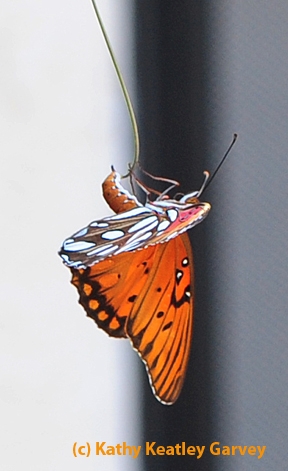
Complete metamorphosis. Complete awe.
In our yard, the Gulf Fritillary butterflies (Agraulis vanillae) are laying eggs on our passionflower vine (Passiflora). They deposit the eggs on top of the leaves, beneath the leaves, or on the tendrils.
An egg hatches, and a caterpillar--a very hungry caterpillar--emerges. It eats as if there is no tomorrow, and for some, there IS no tomorrow. Predators, including birds, spiders, praying mantids and European paper wasps, await them.
Humans also kill them with pesticides because the caterpillars do what they're supposed to do--eat the leaves. Skeletonized plants in the garden? Horrors, what would our neighbors say?
But, if all goes well, and the caterpillars thrive, the next stage is the chrysalis.
Finally, the adult butterfly emerges from the chrysalis to start the life cycle all over again.
Sometimes when you look at the tiny yellow Gulf Frit egg, it's difficult to imagine that one day it will become a reddish-orange butterfly fluttering around the garden, sipping nectar from lantana (genus Lantana), Mexican sunflowers (Tithonia) and other plants.
Interested in butterflies? When you get a chance, you should explore Art Shapiro's Butterfly World. Shapiro, a distinguished professor of evolution and ecology at the University of California, Davis, monitors the butterfly population in the Central Valley. He's also written a book, Field Guide to Butterflies of the San Francisco Bay and Sacramento Valley Regions.
And those amazing Gulf Frits? They're making a comeback in the Sacramento area.
And none too soon.
Attached Images:
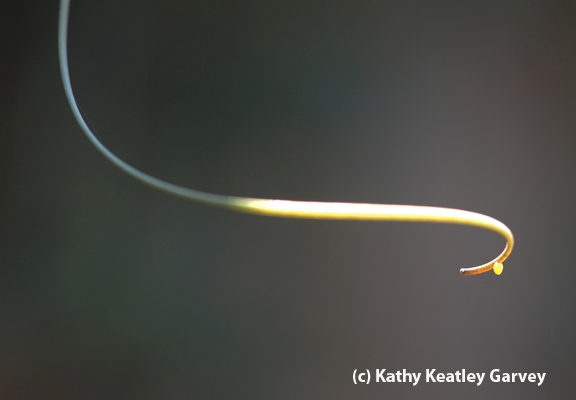
Tiny Gulf Fritillary butterfly egg at end of a tendril on a passionflower vine. (Photo by Kathy Keatley Garvey)
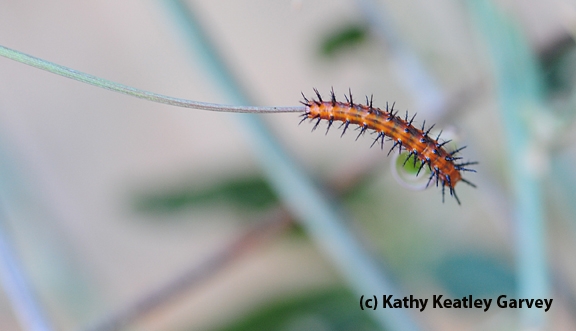
A very hungry caterpillar. (Photo by Kathy Keatley Garvey)
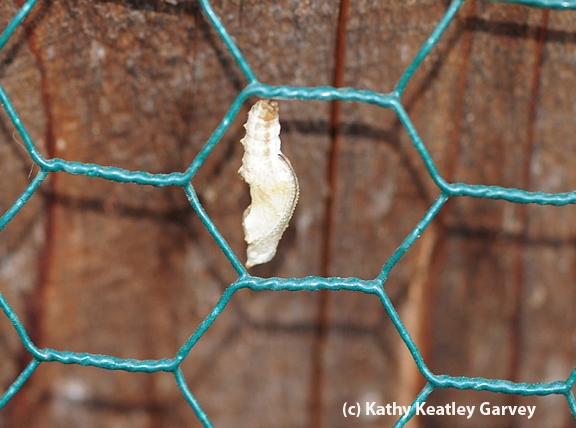
A chrysalis: soon a butterfly will emerge. (Photo by Kathy Keatley Garvey)
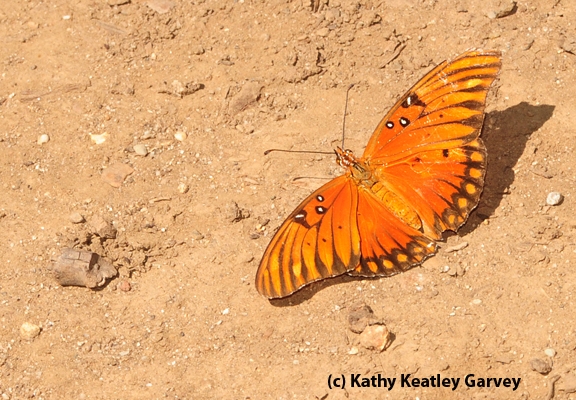
An adult Gulf Fritillary. (Photo by Kathy Keatley Garvey)